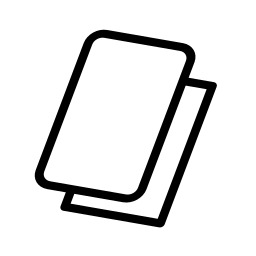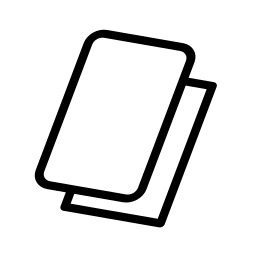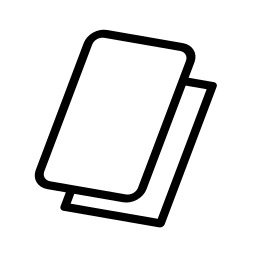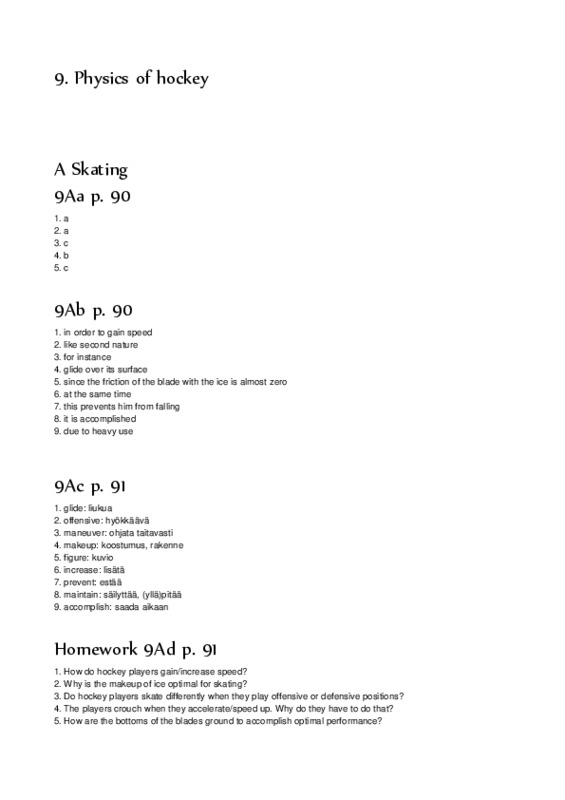ENA5
Ryhmäkäännnös text 2
Don’t bet on it
1.
The unpredictable and the predetermined unfold together to make everything the way it is. It’s how nature creates itself, on every scale, the snowflake and the snowstorm. It makes me so happy. To be at the beginning again, knowing almost nothing.
–Tom Stoppard, Arcadia–
There is a single red dice sitting on my desk next to me. I got the dice on a trip to Las Vegas. I fell in love with it when I saw it on the craps table. It was so perfectly engineered. Such precise edges coming to a point at the corners of the cube. The faces so smooth you couldn’t feel what number the face was representing.
The pips are carved out of the dice and then filled with paint that has the same density as the plastic used to make the dice. This ensures that the face representing the 6 isn’t a touch lighter than the face on the opposite side with a single pip. The feeling of the dice in the hand is incredibly satisfying. It is a thing of beauty. And yet I hate it.
Is that beautiful red cube with its white dots truly unknowable?
Arvaamaton ja ennalta määrätty tulevat näkyviin yhdessä tehden kaiken sellaiseksi kuin se on. Se on kuin luonto luo itsensä kaikilla asteikoilla, lumihiutale ja lumimysky. Se tekee minut niin iloiseksi. Ollakseen taas alussa tietämättä melkein mitään.
Minun viereisellä pöydällä on yksi punainen arpakuutio. Sain arpakuuion Las Vegasin matkalla. Rakastuin siihen kun näin sen pelipöydällä. Se oli niin täydellisesti suunniteltu. Niin tarkat reunat yhdistyvät kuution kulmissa. Sivut ovat niin sileät, että et voi tuntea mitä numeroa sivu esittää. Arpakuution silmät ovat kaiverrettu arpakuutiosta ja sitten on täytetty maalilla, jolla on sama tiheys kun muovilla, jota käytetään arpakuution tekemiseen. Tämä varmistaa, että kutosta esittävä sivu ei ole vähänkään kevyempi kuin vastakkainen sivu, jossa on yksi silmä. Arpakuution tunne kädessä on todella miellyttävä. Se on kauneuden asia. Ja silti vihaan sitä. Onko tämä kaunis punainen kuutio valkoisilla pilkuilla asia jota ei voi tietää.
2.
It’s got three pips pointing up at me at the moment. But if I pick it up and let it fall from my hand I have no way of knowing how it is going to land. It is the ultimate symbol of the unknowable. The future of the dice seems knowable only when it becomes the past.
I have always been extremely unsettled by things that I cannot know. Things that I cannot work out. I don’t mind not knowing something provided there is some way ultimately to calculate what’s going on. With enough time. Is this dice truly so unknowable? Or with enough information can I actually deduce its next move? Surely it’s just a matter of applying the right laws of physics and solving the appropriate mathematical equations. Surely this is something I can know.
Kolme arpakuution silmää osoittaa minua tällä hetkellä. Mutta jos nostan sen ylös ja annan sen pudota kädestäni minulla ei ole mahdollisuutta tietää miten se laskeutuu. Se on äärimmäinen symboli jollekin mitä ei voi tietää. Arpakuution tulevaisuuden näyttää tietävän vain, kun se tulee menneestä. Olen aina ollut todella rauhaton asioista, joita en voi tietää. Asioista, joita en voi selvittää. Voin olla tietämättä jotain jos on olemassa jokin keino laskea, mitä tapahtuu. Ajan kanssa. Onko arpakuutio todella niin arvaamaton? Tai jos minulla on tarpeeksi tietoa, voinko päätellä arpakuution seuraavan siirron? Varmasti siinä on vain kyse fysiikanlakien soveltamisesta ja sopivien matemaattisten yhtälöiden ratkaisemisesta. Varmasti tämä on jotakin jonka voi tietää.
3.
My subject, mathematics, was invented to give people a glimpse of what’s out there coming towards us. To look into the future. To become masters of fate, not its servants. I believe that the universe runs according to laws. Understand those laws and I can know the universe. Spotting patterns has given the human species a very powerful way to take control. If there’s a pattern then I have some chance to predict the future and know the unknowable. The pattern of the Sun means I can rely on it rising in the sky tomorrow or the Moon taking 28 sunrises before it becomes full again. It is how mathematics developed. Mathematics is the science of patterns. Being able to spot patterns is a powerful tool in the evolutionary fight for survival.
. . .
Minun aineeni, matematiikka oli keksitty antamaan ihmisille välähdys siitä, mitä on tulossa meille eteen. Katse tulevaisuuteen. Jotta tulisi kohtalon mestariksi, ei sen palvelijaksi. Minä uskon, että universumi toimii lakien mukaan. Pitää ymmärtää lait, jotta osaa tietää universumin. Kuvioiden huomaaminen on antanut ihmislajille todella voimakkaan tavan ottaa kontrollia. Jos täällä on kuvio, sitten minulla on mahdollisuus ennustaa tulevaisuutta ja tietää tuntematonta. Kuvio auringosta tarkoittaa, että minä voin luottaa, että se nousee taas huomenna taivaalle tai että kuulla menee 28 auringonnousua ennen kuin se on taas täysi. Se on kuinka matematiikka kehittyi. Matematiikka on kuvioiden tiede. Se että pystyt huomaamaan kuvioita, on voimakas keino taistella selviytymisestä.
4.
But there are some things which appear to have no pattern or that have patterns that are so complex or hidden that they are beyond human knowledge. The individual roll of the dice is not like the rising of the Sun. There seems to be no way to know which of the six faces will be pointing upwards once the cube finally comes to rest. It is why the dice has been used since antiquity as a way to decide disputes, to play games, to wager money.
Is that beautiful red cube with its white dots truly unknowable? I’m certainly not the first to have a complex relationship with the dynamics of this cube.
Finding the numbers in the dice'
Mutta on olemassa asioita jotka eivät seuraa mitään kuviota, tai joiden kuviot ovat niin monimutkaisia tai piilotettuja, että ne ovat ihmisymmärryksen saavuttamattomissa. Yksittäinen nopanheitto ei ole kuin auringonnousu. Ei vaikuta olevan mitään tapaa tietää, että mikä kuudesta sivusta osoittaa ylöspäin, kun noppa pysähtyy. Tästä syystä noppaa on käytetty muinaisista ajoista lähtien, kun ratkaistaan kiistoja, pelataan pelejä tai lyödään vetoa. Onko tämä punainen kuutio sen valkoisilla pisteillä täysin arvaamaton? En varmasti ole ensimmäinen jolla on monimutkainen suhde tämän kuution dynamiikkaan.
Numeroiden löytäminen nopasta'
5.
I’ve put another two dice next to my beautiful Las Vegas dice. So here’s the question: If I throw all three dice, is it better to bet on a score of 9 or a score of 10 coming up? Prior to the sixteenth century there were no tools available to answer such a question. And yet anyone who had played for long enough would know that if I was throwing only two dice then it would be wise to bet on 9 rather than 10. After all, experience would tell you before too long that on average you get a 9 a third more often than you get 10. But with three dice it is harder to get a feel for which way to bet, because 9 and 10 seem to occur equally often. But is that really true?
It was in Italy at the beginning of the sixteenth century that an inveterate gambler by the name of Girolamo Cardano first realized that there are patterns that can be exploited in the throw of the dice. They weren’t patterns that could be used on an individual throw. Rather, they emerged over the long run, patterns that a gambler like Cardano, who spent many hours throwing dice, could use to his advantage. So addicted was he to the pursuit of predicting the unknowable that on one occasion he even sold his wife’s possessions to raise the funds for the table stakes.
Olen laittanut kaksi muuta noppaa kauniin Las Vegas noppani viereen. Tässä on kysymys: Jos heitän kaikkia kolmea noppaa, kannattaako pisteeksi veikata 9 vai 10? 1500-luvulla ei ollut välineitä saatavilla tälläisen kysymyksen ratkaisemikseksi. Ja nykyään kuka tahansa joka on pelannut tarpeeksi kauan tietäisi, että jos heittäsin kahta noppaa ja sillon olisi viisaampaa veikata 9 kuin 10. Kokemus kuitenkin kertoisi tämän ennen pitkään keskimäärin, että saat 9 kolme kertaa useammin kuin 10. Mutta kolmella nopalla on hankalampi saada tuntumaa, mikä on paras veikkaus, koska 9 ja 10 tulevat usein tasa-arvoisesti. Mutta onko tämä oikeasti totta?
Italiassa 1500-luvun alussa piintynyt uhkapeluri Girolamo Cardano tajusi ensimmäisenä, että on kuvioita, joita voi käyttää hyväkseen nopanheitossa. Niitä kuvioita ei voinut käyttää yksittäisessä heitossa. Ne nousivat esiin pikemminkin pitkällä aikavälillä, kuviot, joita Cardanon kaltainen uhkapeluri, joka käytti monia tuntia nopanheitossa, voisi käyttää hyödykseen. Hän oli niin koukussa tavoittelemaan ennustusta arvaamattomasta, että tilaisuuden tullen hän jopa myi vaimonsa omaisuuden käyttääkseen varat panoksiin.
6.
Cardano had the clever idea of counting how many different futures the dice could have. If I throw two dice, there are 36 different futures. They are depicted in the following diagram.
Only in three of them is the total 10, while four give you a score of 9. So Cardano reasoned that, in the case of two dice being thrown, it makes sense to bet on 9 rather than 10. It did not help in any individual game, but in the long run it meant that Cardano, if he stuck to his maths, would come out on top. Unfortunately, while a disciplined mathematician, he wasn’t very disciplined when it came to his gambling. He managed to lose all his inheritance from his father and would get into knife fights with his opponents when the dice went against him.
He was nevertheless determined to get one prophecy correct. He had apparently predicted the date of his death: 21 September 1576. To make sure he got this bet right he took matters into his own hands. He committed suicide when the date finally struck. As much as I crave knowledge, I think this is going a little far. Indeed, the idea of knowing the date of your death is something that most would prefer to opt out of. But Cardano was determined to win, even when he was dicing with Death.
Cardanolla oli nokkela ajatus laskea, kuinka monta erilaista tulevaisuutta nopilla voisi olla. Jos heitän kaksi noppaa, on 36 erilaista futuuria. Ne on kuvattu seuraavassa kaaviossa.
Vain kolmessa nopassa tulee yhteensä 10, kun taas neljä antaa sinulle pistemäärän 9. Joten Cardano perusteli, että jos kaksi noppaa heitetään, on järkevää lyödä vetoa 9: stä 10: een. Se ei auttanut missään yksittäisessä pelissä, mutta pitkällä tähtäimellä se tarkoitti, että Cardano, jos hän pidättäytyisi matematiikassaan, hän voittaisi. Valitettavasti, vaikka hän oli kurinalainen matemaatikko, hän ei ollut kovin kurinalainen pelaamisen suhteen. Hän onnistui menettämään kaiken isältään saamansa perinnön ja ajautui veitsitaisteluihin vastustajiensa kanssa, kun peli ei mennytkään hyvin.
Hän oli kuitenkin päättänyt saada yhden ennustuksen oikein. Hän oli ilmeisesti ennustanut kuolemansa päivämäärän: 21. syyskuuta 1576. Varmistaakseen, että hän sai tämän vedon oikein, hän otti asiat omiin käsiinsä. Hän teki itsemurhan päivämäärän koittaessa. Niin paljon kuin kaipaan tietoa, mielestäni tämä menee hieman pitkälle. Itse asiassa ajatus tietää kuolemasi päivämäärä on asia, josta useimmat haluaisivat luopua. Mutta Cardano oli päättänyt voittaa, jopa silloin, kun hän noppaili kuoleman kanssa.
1.
The unpredictable and the predetermined unfold together to make everything the way it is. It’s how nature creates itself, on every scale, the snowflake and the snowstorm. It makes me so happy. To be at the beginning again, knowing almost nothing.
–Tom Stoppard, Arcadia–
There is a single red dice sitting on my desk next to me. I got the dice on a trip to Las Vegas. I fell in love with it when I saw it on the craps table. It was so perfectly engineered. Such precise edges coming to a point at the corners of the cube. The faces so smooth you couldn’t feel what number the face was representing.
The pips are carved out of the dice and then filled with paint that has the same density as the plastic used to make the dice. This ensures that the face representing the 6 isn’t a touch lighter than the face on the opposite side with a single pip. The feeling of the dice in the hand is incredibly satisfying. It is a thing of beauty. And yet I hate it.
Is that beautiful red cube with its white dots truly unknowable?
Arvaamaton ja ennalta määrätty tulevat näkyviin yhdessä tehden kaiken sellaiseksi kuin se on. Se on kuin luonto luo itsensä kaikilla asteikoilla, lumihiutale ja lumimysky. Se tekee minut niin iloiseksi. Ollakseen taas alussa tietämättä melkein mitään.
Minun viereisellä pöydällä on yksi punainen arpakuutio. Sain arpakuuion Las Vegasin matkalla. Rakastuin siihen kun näin sen pelipöydällä. Se oli niin täydellisesti suunniteltu. Niin tarkat reunat yhdistyvät kuution kulmissa. Sivut ovat niin sileät, että et voi tuntea mitä numeroa sivu esittää. Arpakuution silmät ovat kaiverrettu arpakuutiosta ja sitten on täytetty maalilla, jolla on sama tiheys kun muovilla, jota käytetään arpakuution tekemiseen. Tämä varmistaa, että kutosta esittävä sivu ei ole vähänkään kevyempi kuin vastakkainen sivu, jossa on yksi silmä. Arpakuution tunne kädessä on todella miellyttävä. Se on kauneuden asia. Ja silti vihaan sitä. Onko tämä kaunis punainen kuutio valkoisilla pilkuilla asia jota ei voi tietää.
2.
It’s got three pips pointing up at me at the moment. But if I pick it up and let it fall from my hand I have no way of knowing how it is going to land. It is the ultimate symbol of the unknowable. The future of the dice seems knowable only when it becomes the past.
I have always been extremely unsettled by things that I cannot know. Things that I cannot work out. I don’t mind not knowing something provided there is some way ultimately to calculate what’s going on. With enough time. Is this dice truly so unknowable? Or with enough information can I actually deduce its next move? Surely it’s just a matter of applying the right laws of physics and solving the appropriate mathematical equations. Surely this is something I can know.
Kolme arpakuution silmää osoittaa minua tällä hetkellä. Mutta jos nostan sen ylös ja annan sen pudota kädestäni minulla ei ole mahdollisuutta tietää miten se laskeutuu. Se on äärimmäinen symboli jollekin mitä ei voi tietää. Arpakuution tulevaisuuden näyttää tietävän vain, kun se tulee menneestä. Olen aina ollut todella rauhaton asioista, joita en voi tietää. Asioista, joita en voi selvittää. Voin olla tietämättä jotain jos on olemassa jokin keino laskea, mitä tapahtuu. Ajan kanssa. Onko arpakuutio todella niin arvaamaton? Tai jos minulla on tarpeeksi tietoa, voinko päätellä arpakuution seuraavan siirron? Varmasti siinä on vain kyse fysiikanlakien soveltamisesta ja sopivien matemaattisten yhtälöiden ratkaisemisesta. Varmasti tämä on jotakin jonka voi tietää.
3.
My subject, mathematics, was invented to give people a glimpse of what’s out there coming towards us. To look into the future. To become masters of fate, not its servants. I believe that the universe runs according to laws. Understand those laws and I can know the universe. Spotting patterns has given the human species a very powerful way to take control. If there’s a pattern then I have some chance to predict the future and know the unknowable. The pattern of the Sun means I can rely on it rising in the sky tomorrow or the Moon taking 28 sunrises before it becomes full again. It is how mathematics developed. Mathematics is the science of patterns. Being able to spot patterns is a powerful tool in the evolutionary fight for survival.
. . .
Minun aineeni, matematiikka oli keksitty antamaan ihmisille välähdys siitä, mitä on tulossa meille eteen. Katse tulevaisuuteen. Jotta tulisi kohtalon mestariksi, ei sen palvelijaksi. Minä uskon, että universumi toimii lakien mukaan. Pitää ymmärtää lait, jotta osaa tietää universumin. Kuvioiden huomaaminen on antanut ihmislajille todella voimakkaan tavan ottaa kontrollia. Jos täällä on kuvio, sitten minulla on mahdollisuus ennustaa tulevaisuutta ja tietää tuntematonta. Kuvio auringosta tarkoittaa, että minä voin luottaa, että se nousee taas huomenna taivaalle tai että kuulla menee 28 auringonnousua ennen kuin se on taas täysi. Se on kuinka matematiikka kehittyi. Matematiikka on kuvioiden tiede. Se että pystyt huomaamaan kuvioita, on voimakas keino taistella selviytymisestä.
4.
But there are some things which appear to have no pattern or that have patterns that are so complex or hidden that they are beyond human knowledge. The individual roll of the dice is not like the rising of the Sun. There seems to be no way to know which of the six faces will be pointing upwards once the cube finally comes to rest. It is why the dice has been used since antiquity as a way to decide disputes, to play games, to wager money.
Is that beautiful red cube with its white dots truly unknowable? I’m certainly not the first to have a complex relationship with the dynamics of this cube.
Finding the numbers in the dice'
Mutta on olemassa asioita jotka eivät seuraa mitään kuviota, tai joiden kuviot ovat niin monimutkaisia tai piilotettuja, että ne ovat ihmisymmärryksen saavuttamattomissa. Yksittäinen nopanheitto ei ole kuin auringonnousu. Ei vaikuta olevan mitään tapaa tietää, että mikä kuudesta sivusta osoittaa ylöspäin, kun noppa pysähtyy. Tästä syystä noppaa on käytetty muinaisista ajoista lähtien, kun ratkaistaan kiistoja, pelataan pelejä tai lyödään vetoa. Onko tämä punainen kuutio sen valkoisilla pisteillä täysin arvaamaton? En varmasti ole ensimmäinen jolla on monimutkainen suhde tämän kuution dynamiikkaan.
Numeroiden löytäminen nopasta'
5.
I’ve put another two dice next to my beautiful Las Vegas dice. So here’s the question: If I throw all three dice, is it better to bet on a score of 9 or a score of 10 coming up? Prior to the sixteenth century there were no tools available to answer such a question. And yet anyone who had played for long enough would know that if I was throwing only two dice then it would be wise to bet on 9 rather than 10. After all, experience would tell you before too long that on average you get a 9 a third more often than you get 10. But with three dice it is harder to get a feel for which way to bet, because 9 and 10 seem to occur equally often. But is that really true?
It was in Italy at the beginning of the sixteenth century that an inveterate gambler by the name of Girolamo Cardano first realized that there are patterns that can be exploited in the throw of the dice. They weren’t patterns that could be used on an individual throw. Rather, they emerged over the long run, patterns that a gambler like Cardano, who spent many hours throwing dice, could use to his advantage. So addicted was he to the pursuit of predicting the unknowable that on one occasion he even sold his wife’s possessions to raise the funds for the table stakes.
Olen laittanut kaksi muuta noppaa kauniin Las Vegas noppani viereen. Tässä on kysymys: Jos heitän kaikkia kolmea noppaa, kannattaako pisteeksi veikata 9 vai 10? 1500-luvulla ei ollut välineitä saatavilla tälläisen kysymyksen ratkaisemikseksi. Ja nykyään kuka tahansa joka on pelannut tarpeeksi kauan tietäisi, että jos heittäsin kahta noppaa ja sillon olisi viisaampaa veikata 9 kuin 10. Kokemus kuitenkin kertoisi tämän ennen pitkään keskimäärin, että saat 9 kolme kertaa useammin kuin 10. Mutta kolmella nopalla on hankalampi saada tuntumaa, mikä on paras veikkaus, koska 9 ja 10 tulevat usein tasa-arvoisesti. Mutta onko tämä oikeasti totta?
Italiassa 1500-luvun alussa piintynyt uhkapeluri Girolamo Cardano tajusi ensimmäisenä, että on kuvioita, joita voi käyttää hyväkseen nopanheitossa. Niitä kuvioita ei voinut käyttää yksittäisessä heitossa. Ne nousivat esiin pikemminkin pitkällä aikavälillä, kuviot, joita Cardanon kaltainen uhkapeluri, joka käytti monia tuntia nopanheitossa, voisi käyttää hyödykseen. Hän oli niin koukussa tavoittelemaan ennustusta arvaamattomasta, että tilaisuuden tullen hän jopa myi vaimonsa omaisuuden käyttääkseen varat panoksiin.
6.
Cardano had the clever idea of counting how many different futures the dice could have. If I throw two dice, there are 36 different futures. They are depicted in the following diagram.
Only in three of them is the total 10, while four give you a score of 9. So Cardano reasoned that, in the case of two dice being thrown, it makes sense to bet on 9 rather than 10. It did not help in any individual game, but in the long run it meant that Cardano, if he stuck to his maths, would come out on top. Unfortunately, while a disciplined mathematician, he wasn’t very disciplined when it came to his gambling. He managed to lose all his inheritance from his father and would get into knife fights with his opponents when the dice went against him.
He was nevertheless determined to get one prophecy correct. He had apparently predicted the date of his death: 21 September 1576. To make sure he got this bet right he took matters into his own hands. He committed suicide when the date finally struck. As much as I crave knowledge, I think this is going a little far. Indeed, the idea of knowing the date of your death is something that most would prefer to opt out of. But Cardano was determined to win, even when he was dicing with Death.
Cardanolla oli nokkela ajatus laskea, kuinka monta erilaista tulevaisuutta nopilla voisi olla. Jos heitän kaksi noppaa, on 36 erilaista futuuria. Ne on kuvattu seuraavassa kaaviossa.
Vain kolmessa nopassa tulee yhteensä 10, kun taas neljä antaa sinulle pistemäärän 9. Joten Cardano perusteli, että jos kaksi noppaa heitetään, on järkevää lyödä vetoa 9: stä 10: een. Se ei auttanut missään yksittäisessä pelissä, mutta pitkällä tähtäimellä se tarkoitti, että Cardano, jos hän pidättäytyisi matematiikassaan, hän voittaisi. Valitettavasti, vaikka hän oli kurinalainen matemaatikko, hän ei ollut kovin kurinalainen pelaamisen suhteen. Hän onnistui menettämään kaiken isältään saamansa perinnön ja ajautui veitsitaisteluihin vastustajiensa kanssa, kun peli ei mennytkään hyvin.
Hän oli kuitenkin päättänyt saada yhden ennustuksen oikein. Hän oli ilmeisesti ennustanut kuolemansa päivämäärän: 21. syyskuuta 1576. Varmistaakseen, että hän sai tämän vedon oikein, hän otti asiat omiin käsiinsä. Hän teki itsemurhan päivämäärän koittaessa. Niin paljon kuin kaipaan tietoa, mielestäni tämä menee hieman pitkälle. Itse asiassa ajatus tietää kuolemasi päivämäärä on asia, josta useimmat haluaisivat luopua. Mutta Cardano oli päättänyt voittaa, jopa silloin, kun hän noppaili kuoleman kanssa.
Opetuskalvot
Opetuskalvot
Pilkun käyttö
Text 9_vastaukset
Kirjoitelman palautus
Valitse aihe kirjan sivuilta 128-129 ja kirjoita 700-1300 merkin pituinen kirjoitelma. Palauta valmis kirjoitelma tähän kansioon (tai sähköpostitse (kaisa-kerttu.peltola@harjavalta.fi) 12.3. mennessä
Sinulla ei ole tarvittavia oikeuksia lähettää mitään.
Kurssin aihepiirit, aikataulu ja suorittaminen
Tiede ja tulevaisuus (ENA5)
Aihepiirit
-
Eri tiedon ja tieteenalat meillä ja maailmalla
-
Tulevaisuuden visiot
-
Englanti tieteen, tutkimuksen ja teknologian kielenä
-
Ihminen tieteen tuottajana ja tutkimuksen kohteena
Rakenteet
-
Infinitiivi, that-lause ja ing-muoto
-
Paljoussanat
-
Lukusanat ja ajanilmaukset
Kurssin aikataulu (alustava)
Viikko
Text 1 Bad driving: What are we thinking?
Glossary: Traffic
Viikko
Sanakoe 1
Text 2: Don't bet on it
Glossary: Psychology
Viikko
Talvilomaviikko
Viikko
Text 3 The ubiquitous woman
Lukusanat ja ajanilmaukset
Paljoussanat
Viikko
Sanakoe 2
Text 5 When data gets creepy
Infinitiivi, that-lause ja ing-muoto
Viikko
Sanakoe 3
Text 7 Electrifying the world
Glossary: Science
Viikko
Sanakoe 4
Science fair workshop
Kurssin suorittaminen
Kurssin suorittaminen koostuu seuraavista osista (% =vaikutus arvosanaan):
1. 4 sanakoetta (joista vähintään 3 läpäistävä)
2. Kirjoitelma (palautus Pedanet-kansioon)
3. Kurssikoe koeviikolla:
Kokeen osa-alueet
a. Kielioppi
b. Sanasto/rakennetehtävät
c. Kuullunymmärtäminen
d. Luetun ymmärtäminen
4. Tuntiaktiivisuus ja workshop-tehtävät
1. 4 sanakoetta (joista vähintään 3 läpäistävä)
2. Kirjoitelma (palautus Pedanet-kansioon)
3. Kurssikoe koeviikolla:
Kokeen osa-alueet
a. Kielioppi
b. Sanasto/rakennetehtävät
c. Kuullunymmärtäminen
d. Luetun ymmärtäminen
4. Tuntiaktiivisuus ja workshop-tehtävät



